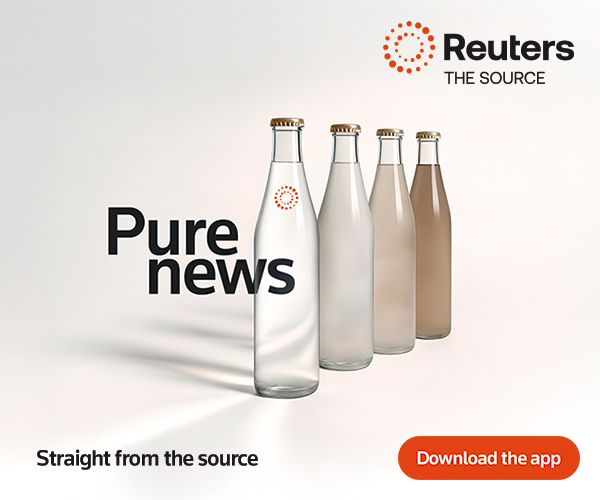Reuters uses AI to call out misinformation in new global campaign
Reuters’ latest campaign uses AI to highlight its stance on factual, agenda-free reporting

In the age of algorithmic newsfeeds and AI-generated misinformation, Reuters is making a bold brand statement: trust is not negotiable.
The global news agency has launched a new brand campaign titled “Pure news, straight from the source”, which uses generative AI not to produce journalism, but to visualize how distorted information spreads when it strays too far from original reporting. The campaign arrives amid heightened anxiety about the authenticity of online content, with 73% of US respondents expressing concern about fake news, according to the Reuters Institute Digital News Report.
This article explores how Reuters is using AI not to create the news, but to defend its integrity and what that says about the evolving relationship between journalism, marketing, and public trust.
Short on time?
Here’s a table of contents for quick access:

What the Reuters campaign is about
Created by agency Gravity Road and directed by BAFTA-nominated Ivan Bird, the “Pure news” campaign centers on a cinematic short film that imagines a world where water is no longer clear but contaminated. The metaphor is used to illustrate how information can get distorted as it moves further from the original source.
The film starts with synthetic, AI-generated imagery representing murky information, then transitions into authentic Reuters footage. The message is clear: the further you get from the source, the more diluted the truth becomes.

The campaign reinforces the Reuters Trust Principles and its editorial policy against using generative AI to produce or manipulate news imagery. It turns AI into a creative device to highlight the value of human-led journalism.
The launch comes at a time of growing public skepticism toward digital media. With misinformation proliferating across social platforms, Reuters positions itself as a beacon of clarity in a noisy content ecosystem.
How AI plays a dual role in the spot
While many brands lean into generative AI for content creation, Reuters flips the script. It uses AI to warn audiences about the dangers of manipulated visuals and to reassert the value of editorial integrity.
The campaign’s key transition — from AI-generated scenes to real, verified footage — illustrates the contrast between machine-produced content and journalism grounded in on-the-ground reporting. The spot features original footage from Reuters’ network of over 2,600 journalists operating in 200 locations globally.
By doing this, the campaign turns AI into a storytelling contrast rather than a production shortcut. It invites viewers to question what they are consuming and to seek out news that is closer to the original source.
What marketers should know
Marketers can take away several key lessons from this campaign, especially as they weigh how to incorporate or critique AI in brand messaging.
1. Transparency is a competitive advantage
Reuters doesn’t just claim it avoids using AI to generate news content. It shows the implications of not doing so. For brands in trust-sensitive sectors like health, finance, or media, transparency about AI use can be a trust builder — or a liability if ignored.
2. AI is not just a tool, it's a narrative device
Reuters proves that you can use AI creatively without using it for automation. The campaign leverages AI-generated visuals to start a conversation about credibility. This approach shows how brands can engage with AI without fully relying on it for production.
3. Messaging metaphors matter
The use of water as a symbol for pure information resonates with audiences who already care about what they consume. If consumers are scrutinizing ingredients and product sourcing, they’re just as ready to apply the same thinking to media and content. This kind of metaphor-first messaging helps build stronger brand associations.
4. Turn editorial policy into brand story
The campaign doesn't sell subscriptions or features. It sells trust. Brands that have strong internal ethics or policies around AI, data, or sustainability should consider turning those guidelines into public-facing stories. When public trust is fragile, showing your internal rules can become a form of brand differentiation.
In an industry where speed and scale often come at the cost of credibility, Reuters' campaign offers a playbook for standing firm. The brand’s use of AI as a contrast to human-led journalism highlights a critical distinction that more marketers should acknowledge.
This isn’t just a media campaign. It’s a positioning move. For brands navigating an AI-saturated landscape, the message is simple: don’t just chase the trend — own your stance, and make it clear to your audience why it matters.




